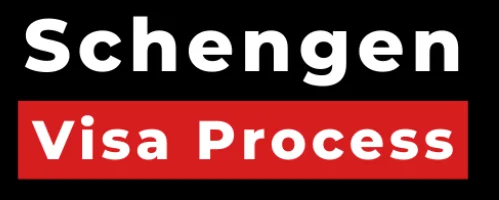Get clear on the Schengen visa application process. Our FAQs cover steps, biometrics, cover letters, and more to help you apply confidently and successfully.
What are the step-by-step instructions for submitting a successful Schengen visa application?
Submitting a successful Schengen visa application involves several crucial steps. Start by identifying the appropriate Schengen consulate for your application. Gather all necessary documents, meticulously filling out the application form with accurate information. Schedule an appointment as early as possible and attend it punctually. During the appointment, provide biometric data as required. Organize your documents, ensure they meet the consulate’s specific requirements, and clearly showcase your intent to comply with Schengen regulations.
Can you guide me through the online Schengen visa application process and any potential challenges?
The online Schengen visa application process encompasses inputting personal particulars, outlining travel plans, and uploading essential documents. While the process is generally straightforward, technical issues can arise, causing frustration. Ensure document formatting aligns with requirements and triple-check for data accuracy. Save digital copies of your application and documents to swiftly address any concerns during your appointment. Being well-prepared minimizes potential challenges and ensures a smoother application experience.
What’s the role of biometric data collection in the Schengen visa application process?
Biometric data collection plays a pivotal role in bolstering the security of Schengen visa applications. This data includes fingerprints and photographs, which help prevent identity fraud and unauthorized access. During your visa application appointment, biometric data is collected and stored in the Visa Information System (VIS). This stored data serves as a unique identifier, verifying your identity each time you enter a Schengen country.
What factors should I consider when choosing the most suitable Schengen consulate for application?
Selecting the right Schengen consulate is critical for a successful application. Factors such as your primary destination, travel itinerary, and current residence play a key role. Choose a consulate that serves your region and consider applying at the consulate representing your main destination. Applying at the wrong consulate can lead to complications and potential rejection.
How can I maximize the chances of securing an early appointment slot for my Schengen visa application?
Securing an early Schengen visa appointment can be competitive. To increase your chances, initiate the application process well in advance. As soon as appointment bookings open, be prompt in scheduling. Utilize online tools or services designed to secure appointments quickly. This proactive approach enhances your chances of obtaining a suitable appointment slot aligned with your travel plans.
What is the significance of the Schengen visa cover letter and how can I draft an effective one?
The Schengen visa cover letter holds substantial significance in your application. It provides a platform to elaborate on your travel purpose, itinerary, ties to your home country, and other pertinent details. An effective cover letter reinforces the legitimacy of your intentions and bolsters your application. Draft your cover letter concisely, clearly articulating your reasons for travel and demonstrating your commitment to complying with visa regulations.
Can you provide insights into the typical processing timeline for a Schengen visa application?
The processing timeline for Schengen visa applications can vary based on the consulate and seasonal factors. Processing times range from several days to several weeks. It’s advisable to apply well in advance of your intended travel date to allow sufficient time for processing. Regularly monitor the official consulate website for up-to-date processing time information.
Are there any recent changes to the Schengen visa application process that I should be aware of?
Stay informed about potential changes to the Schengen visa application process by regularly checking the official consulate website. Updates can include alterations to document requirements, procedures, and processing times. Being aware of these changes ensures that your application aligns with the latest regulations.
How does the Schengen visa application process differ for short stays versus long stays?
The Schengen visa application process follows a similar structure for both short stays (Type C visas) and long stays (Type D visas). However, long-stay visas typically necessitate additional documentation such as medical certificates, proof of accommodation, and a comprehensive itinerary. Always verify the specific requirements for your chosen visa type to ensure a thorough and accurate application.
What are some common mistakes to avoid during the Schengen visa application submission?
When submitting your Schengen visa application, steer clear of common pitfalls. These include submitting incomplete forms, omitting essential documents, providing incorrect information, presenting inconsistent details, and failing to provide sufficient evidence to support your application. Prioritize a meticulous review of the requirements, and consider seeking professional guidance to minimize the risk of errors.



